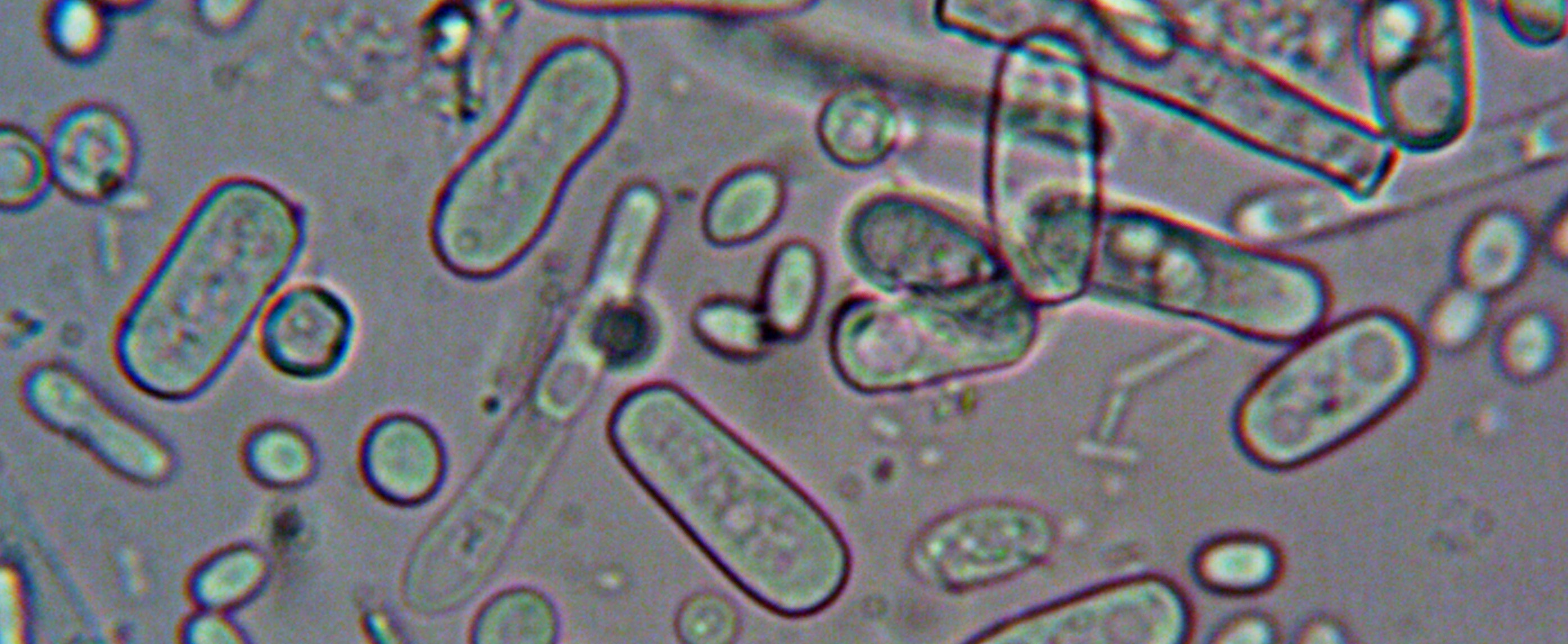What is microscopy?
In a nutshell, microscopy is about seeing things that we cannot see with the naked eye...
But how small is that, actually?
Well, let's first try to build some intuition about it. The thickness of human hair roughly varies from 20 to 200 . For comparison, think of a typical school ruler as in the figure below: its smaller division consists of 1 mm = 1000 . I believe it is reasonable to say that, when we look at a thin humar hair, its thickness is close to the limit of what our eyes can resolve. So, let's say that our eyes can see objects down 20 microns. Hence, let's rephrase the nutshell sentence:
In a nutshell, microscopy is about seeing things smaller than 20 microns, that is, the thickness of a thin human hair.

Now, let’s take a step back and think not about small things, but about the everyday macroscopic world around us...
A few hundred years ago, before photography even existed, if you did not have access to big urban centers with museums or if you did not have money to travel to distant places, it is likely that the only way you would view dinosaur fossils or the Iguaçu Falls, would be through artistic representations made by the few lucky ones who had the means to see these wonders by themselves.
Fast-forward to the present time, the scenario is completely different: we have photographs, movies, and the whole internet filled material about dinosaurs and the most astounding places around (and outside!) the Earth. Nonetheless, people keep wishing to travel every year to see things by themselves. Just the other day I showed my father a photo of a galaxy taken by the James Webb Space Telescope and, after gazing at the picture for a few seconds, he said: "I wish I could travel there and see this with my own eyes".
Let’s be honest, while planning your trip to Foz do Iguaçu, you are exposed to dozens of pictures of the Falls beforehand. But can you imagine the marvel it would be to see things/places for the first time if we only had a rough idea of it through sketches and paintings? With all the media available to us, we still wish to see know the world with our own eyes...
Isn’t that curious?
At least to me, this indicates there is something truly special for humans about seeing. And well, since microscopy is all about seeing, I cannot help but think that microscopy is also quite a special field of science.
But why should you care?
Well, a typical answer might come from the famous quote attributed to god-knows-who:
Seeing is believing.
My honest opinion is that such an answer is far from satisfactory, though. Belief by itself would not have made us come this far. Microscopy allowed us to do much more. So I took the liberty to modify that quote a little bit:
Seeing is more than believing.
Seeing is understanding. And understanding is knowing.
When we see things happening in front of us, it not only touches us in a different manner, but we are also able to learn so much more.
The advent of microscopy revolutionized our understanding of the natural world to a point few could have imagined beforehand. The date that arguably marks the beginning of microscopy is 1677 when the dutch Leeuwenhoek published his work with the discovery of bacteria and protists. Until then, we only had evidence of living beings of macroscopic size. The discovery that a single droplet of water contained a swarm of moving creatures fighting for life amongst each other started a revolution in biology. Furthermore, these life forms invisible to the naked eye looked nothing like what we saw in the macroscopic world around us, sometimes even looking like monsters. And of course, this not only made it possible to investigate new life forms but also to further analyze the structure of small things around us, be it insects, grains of rock, or the structure of plants.

With microscopy, many diseases whose causes were mysterious to us up to then were found to be caused by microscopic beings. For instance, tuberculosis and cholera, two very mortal diseases of history, were found to be caused by microscopic patogens.
One particular example that got my attention, I heard in an interview with Dr. Manu Prakash. If we think about the recent COVID-19 pandemic, we would hear all the time about the importance of wearing masks to block micro-droplets from spreading in the air and reaching other people. By coughing at a plate a few times and looking at it under the microscope, you would be able to see hundreds of micro-droplets invisible to the naked eye. I bet this would be a compelling aspect to convince anti-mask advocates to start wearing them.
Dr. Manu Prakash himself is a rockstar microscopist from Stanford University. His laboratory developed a simple paper microscope that costs less than 1 dollar, called FoldScope, which now has more than a million users worldwide, and can help people in remote areas of the world use microscopy for education and other applications for the greater good. Make sure to check out his TedTalk on it!
Of course, the examples above are only a couple among thousands. Optical microscopy presents a limiting resolution of about 0.5 , so its applications have a limitation. Science and technology had continued to develop microscopy techniques that go well beyond this limit. I will bring other examples of it in the future, so stay tuned!
I hope I can convince you that watching the microscopic world is extremely powerful and that the quality of our lives relies on it today and will continue to depend on it in the future.